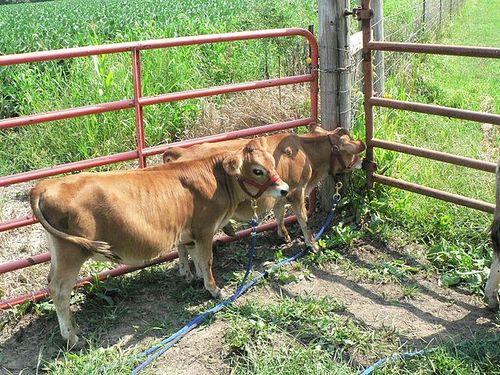Micro-Livestock
Jump to navigation
Jump to search


A miniature version of the Jersey breed of cattle.
Microbreeds: Small breeds of cattle, sheep, goats, and pigs are common in the developing world. Because they are often raised for subsistence rather than for commerce, the national and global contribution that they make is often overlooked. These small, hardy animals deserve much greater recognition. Microlivestock lend themselves to economic niches that are not easily filled by large livestock. Much of their potential is for subsistence production. They are promising for the many peasants who, being outside the cash economy, are now unable to purchase meat, milk, cheese, or eggs.
- The animals are less expensive to buy.
- They are less of a financial risk to maintain. (A farmer with several small animals is less vulnerable to loss than a farmer with a single large animal, a feature that is particularly important in subsistence farming where success determines whether the family will survive.)
- They give a faster return on investment. (Small size generally signifies high reproductive capacity and a fast turnover.)
- They provide flexibility. (Farmers can more easily change the size of their herd or flock to match the amount of feed available at a given time. Also, they can sell animals according to the family's fluctuating needs for cash or food.)
- They provide a steadier source of income.
- They increase the chances of successful breeding because greater numbers are usually kept. (This also means that breeding stock is more likely to be retained in times of scarcity.)
- They are more easily transported. (Who hasn't traveled in a Third World bus or train without chickens, ducks, or guinea pigs as fellow passengers?)
- In some cases they are more efficient converters of food energy.
Links
- Wikipedia: Microponics (combination of micro-livestock and aquaponics); Miniature Cattle
- Appropedia: "Micro-livestock: Little-known Small Animals with a Promising Economic Future"
- 1991(full) book: “Micro-livestock: little known small animals with a promising economic future“.
- article: "How Micro Livestock Can Be Used For Suburban and Rural Sustainability"